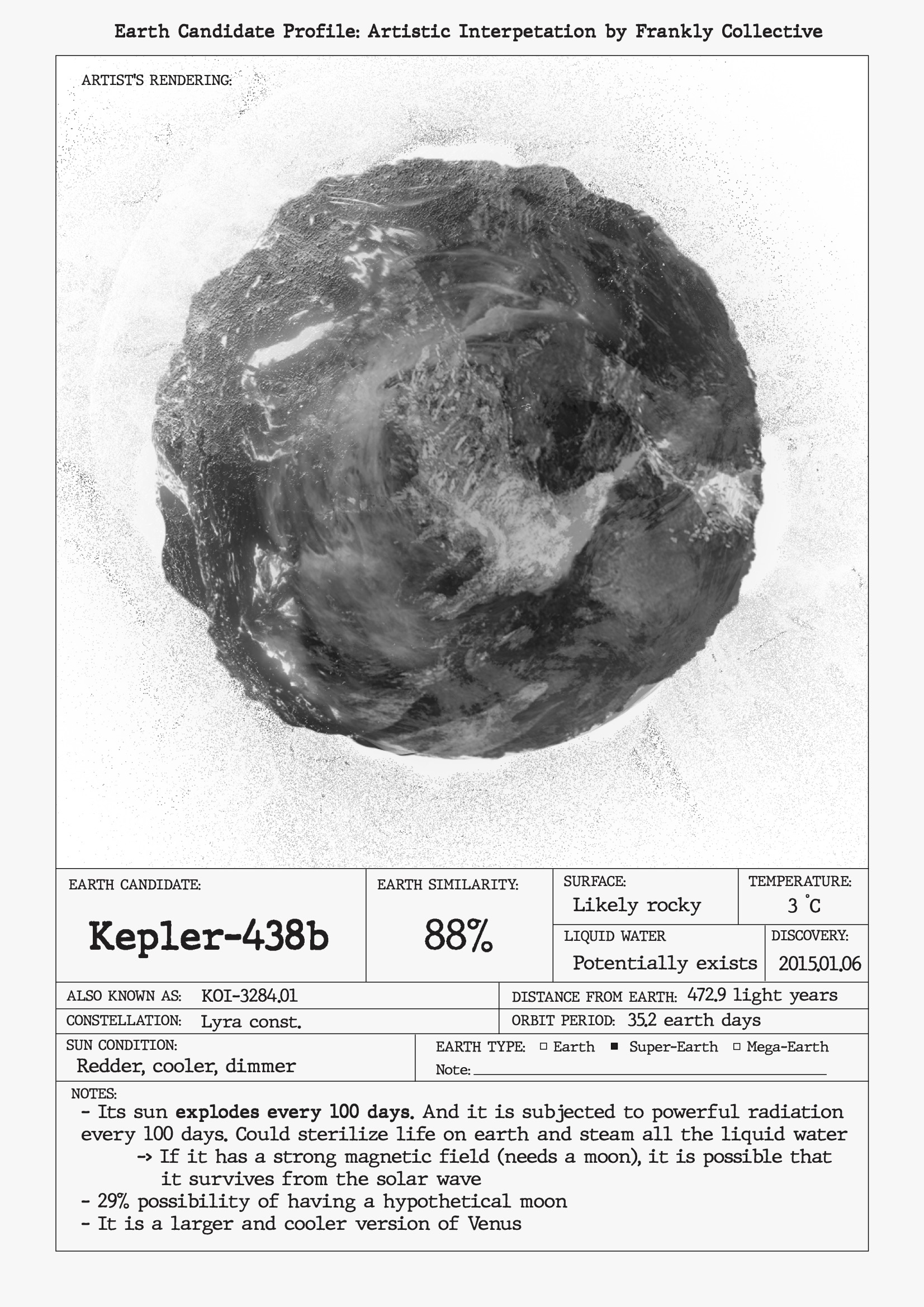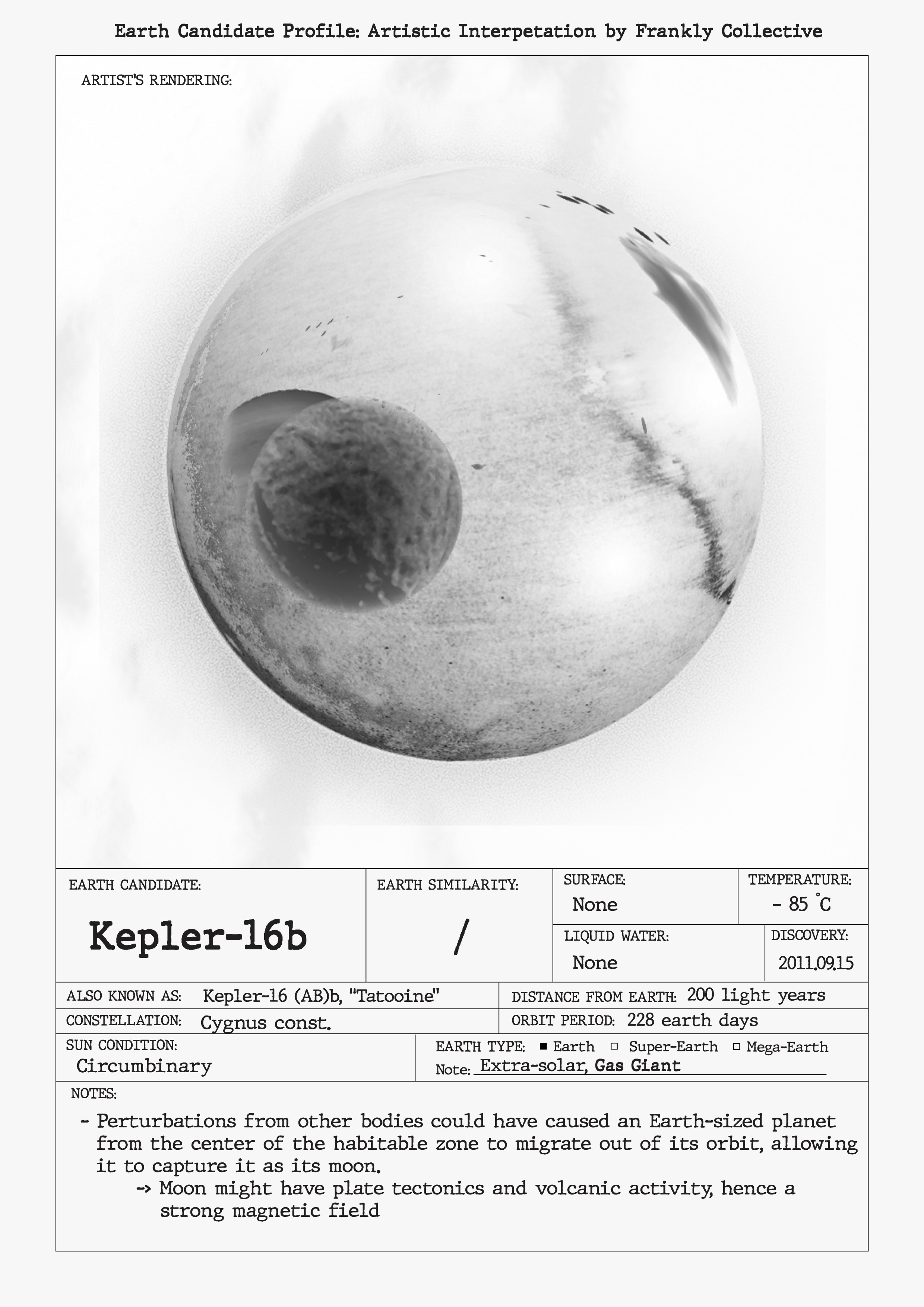Project name: EARTHS
Status: Continueous
Description:
The “Earths” project is an artistic rendering/interpretation of the possible new Earths that were found by the Kepler space telescope.
WHAT IS KEPLER?
Kepler’s mission was to discover earth-like planets outside of our solar system. It served for nine and a half years, until it met its retirement in 2018. Kepler searched and scanned millions of stars and gathered their data using a light-receptive method called transit. With the data gathered by Kepler, we are technically able to find the perfect alternative to Earth. The more a foreign planet mimics Earth, the more optimal conditions will be on that planet for humanity to live on.
PROJECT METHOD
In our project ‘Earths’, we graphically organize Kepler’s dataset and create artistic renderings for each “Earth candidate”. These renderings are created digitally and are based on all data available for a planet: for instance, if a planet has a rocky surface, the planet rendered will have a rocky texture.
WHY
Our rendering/interpretation is based on our understanding of Earth, and therefore be subjective to what we know. By taking purposefully subjective artistic liberties in our planet renderings, one could question whether mimesis is the right tool for finding perfection — perhaps not. If we want a perfect copy of Earth, we would have to create it ourselves. However, Kepler’s goal is not to birth a new Earth: it is to find the perfect imitation/alternative to Earth.
We are fascinated by the Kepler space telescope and its search for alternative Earths, because it strives to find 100% similarity to the current Earth we live on. Mimesis in many cases is nothing more than striving for a 100% similarity. In this way, Kepler’s dataset is fundamentally built on mimesis.
As artists we possess similar tools for mimesis: we are translators of ideas, and translate desires, words and images in our head, to the paper.




